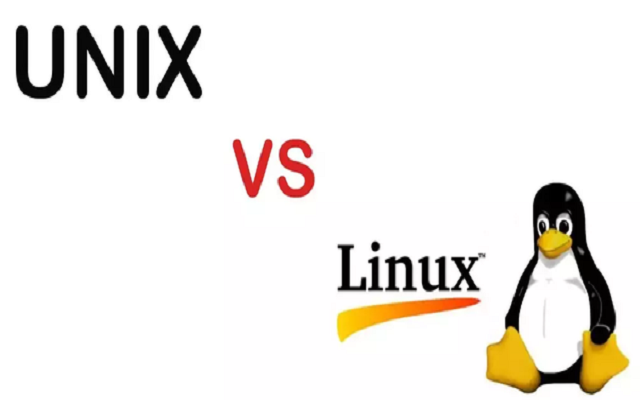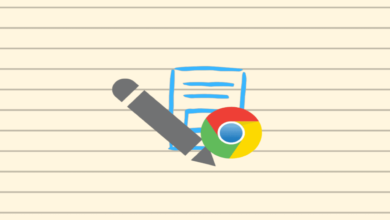Unix vs Linux: 7 Key Differences You Should Know About

Hey dear readers! today we are going to discuss some key differences between Unix and Linux. Both are often compared to each other. Though their names are not same, technically the Linux is a descendant of Unix. There is a number of similarities in tool kits and overall structure. However, they are not exactly the same, there is some huge difference which you really need to know.
Before jumping into the key differences it is very important to know about the UNIX and LINUX. It is important to understand the Unix system and Linux system. So before discussing the differences, let’s discuss a little bit about UNIX and LINUX.
What is Unix:
Unix is a computer operating systems that are derived from the original Unix System from Bell Labs. It is the most powerful and popular multi-user and multi-tasking Operating System. The basic concepts of Unix were developed in the Multics project of 1969.
Unix is a portable, multitasking, multiuser, time-sharing operating system and was first programmed in assembly language but was reprogrammed in C in 1973. It has been ported to more machine families than any other operating system. Unix operating systems are widely available in PCs, servers and mobile devices. It is also considered to be an essential element in the development of the Internet and networking.
History of Unix:
The Unix originated at AT&T Bell Labs in 1960 with a small team of programmers who wrote a multi-tasking, multi-user operating system for the PDP-7. Ken Thompson and Dennis Ritchie were the most notable members of this team at the Bell Labs research facility. Many Unix’s concepts were derivative of its predecessor (Multics), but in 1970 the Unix team rewrite this small operating system in the C language and that is what separated Unix from all others. Unix could now be ported to many hardware architectures because of refactoring Unix on the C programming language.
Several keys of the operating system’s design tenets were attractive to users and programmers that allowed Unix to expand beyond Bell Labs to other research, academic, and even commercial uses so quickly.
Features of Unix OS
- Multi-user, multitasking operating system
- It can be used as the master control program in workstations and servers.
- Hundreds of commercial applications are available
- All the functions in UNIX involve either a file or a process.
- The hub of a UNIX operating system, the kernel manages the applications and peripherals on a system.
Limitations of Unix:
- Unfriendly, terse, treacherous, unforgiving, inconsistent, and non-mnemonic user interface
- Unix originally designed for slow hard-copy terminals and slow display
- Shell interface can be treacherous
- Versions on various machines are slightly different
- Prior to System V mechanisms to synchronize separate jobs were badly implemented as were file lock mechanisms
- Unix does not have a guaranteed hardware interrupt response time
- Security only at a very high level
What is LINUX?
In 1991, the operating system of Linux is built by Linus Torvalds at the University of Helsinki. The name of “Linux” is originated from the Linux kernel. Linux is the software on a computer that enables applications as well as the users in order to access the devices on the computer to perform the specific function.
The term “Linux” strictly refers only to the kernel. This operating system is not complete without a desktop environment and applications. However, the full name of the operating system is GNU/Linux as the majority of applications were and still are provided by the GNU Project.
Nowadays, many people use “Linux”, moreover, the version 4.0 of the Linux kernel is currently in development. Linux is a Unix-like system, that shows it behaves like Unix but doesn’t contain its code.
History of Linux:
Not in the code but Linux is based on Unix in spirit and functionality. This operating system generated from two projects: the GNU Project, started by Richard Stallman in 1983, and the Linux kernel, written by Linus Torvalds in 1991.
Basically, GNU Project wanted to make an operating system similar to Unix, but at the same time separate from it. Like it shouldn’t contain any code from Unix so that it could be further modified and distributed without limitations as free software. Since their own kernel was incomplete, the GNU Project accepted the Linux kernel, and they generated operating system GNU/Linux.
Features of Linux
- It Supports multitasking
- Programs come with one or more processes, and each process consist of one or more threads
- Linux operating system can easily co-exists along with other Operating systems.
- It is able to run multiple user programs
- Because of appropriate authorization, individual accounts are protected
- Linux is similar to UNIX but not using the same code.
Limitation of Linux
- You won’t find any standard edition of Linux
- It comes with patchier support for drivers that may result in misfunctioning of the entire system.
- This operating system is for new users and is not as easy to use as Windows.
- It has no speech recognition for Synthia to use
- Linux is best suitable for a corporate user. It’s much harder to introduce in a home setting.
- Many of the programs you are used to in Windows will only run in via a complicated emulator.
- It is suitable for an individual user, its small market share means it’s much harder to introduce in a corporate setting.
- Linux is offering a much more limited range to the fans of PC gaming.
Unix vs Linux: Key Differences
- Linux operating system is free and open-source, So anyone can get a copy of Linux from books, magazines, or from the internet also. while the original Unix is not free but some of its derivatives are available for free
- UNIX originated in the laboratories of universities and large corporations, while Linux was begun by a university student (Linus Torvalds) without any initial support from any large organization.
- Linux is a “clone” of the original Unix, but it is not containing its code
- Unix is the complete operating system while the Linux is just the kernel. In addition, Linux is portable and is booted from a USB Stick while Unix is not portable.
- Unix was designed for large workstations and servers while Linux was developed for personal computers. More interestingly, now Linux supports more platforms than Unix.
- Unix supports limited filesystem types while Linux supports more filesystem types than Unix.
- In Linux, threat detection and solution is very fast as it is mainly community driven. So, if any Linux user posts any type of threat, a team of qualified developers is available there to start working to resolve this threat while Unix users have to wait for a longer time in order to get the proper bug fixing patch
Conclusion
We hope that our today’s post will provide you the complete guidance and understanding of Unix and Linux. AT&T Bell Labs has released an operating system known as Unix written in C, that is facilitating the users in quicker modification, acceptance, and portability. On the other hand, in 1991 the Linux operating system was built by Linus Torvalds at the University of Helsinki. Moreover, the Unix is Multi-user, multitasking operating system. With other operating systems, Linux can co-exist so easily. Different flavors of Unix comes with different prices as that depends on the vendor’s type. Linux is freely distributed, downloaded through magazines, Books, website, etc.
You can further read about Windows 10.
PTA Taxes Portal
Find PTA Taxes on All Phones on a Single Page using the PhoneWorld PTA Taxes Portal
Explore NowFollow us on Google News!
